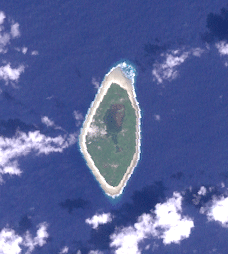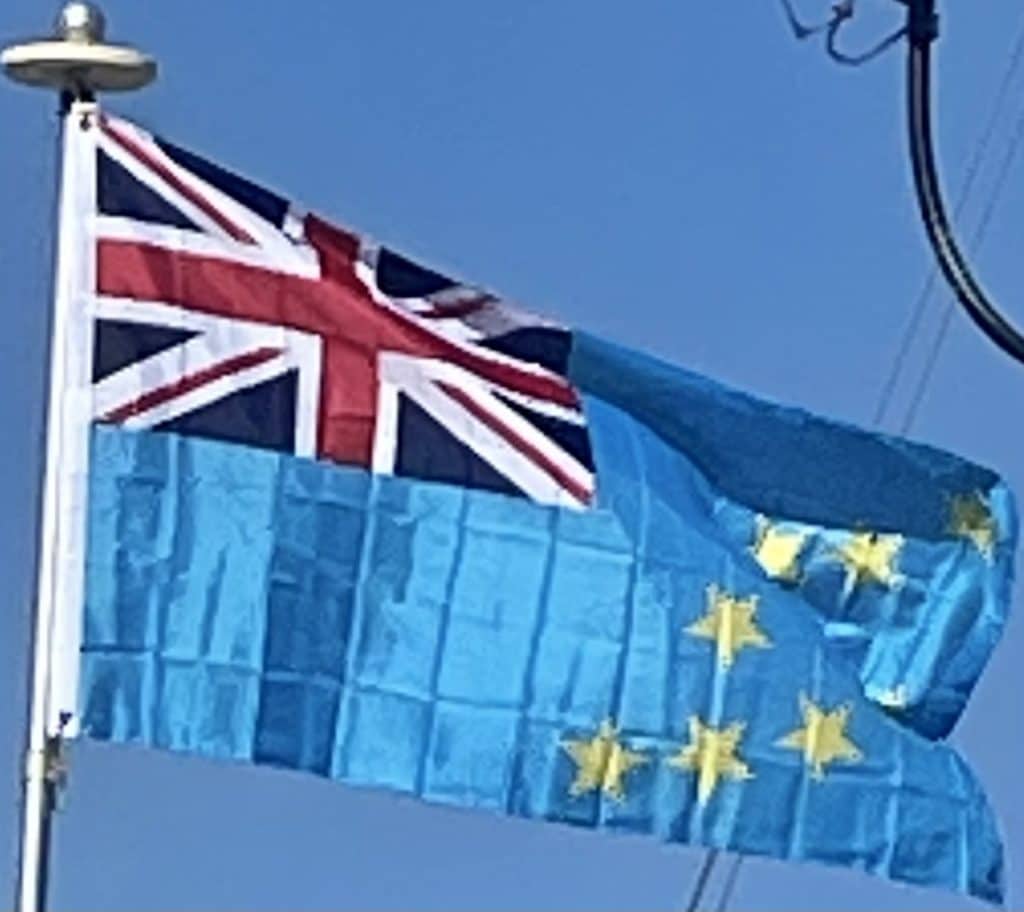
An important creation myth in the islands of Tuvalu is the story of the te Pusi mo te Ali (the Eel and the Flounder), who are said to have created the islands of Tuvalu. Te Ali (the flounder) is believed to be the origin of the flat atolls of Tuvalu and the te Pusin (the Eel) is the model for the coconut palms that are important in the lives of Tuvaluans. The stories of the ancestors of the Tuvaluans vary from island to island. On Niutao, Funafuti and Vaitupu, for instance, the founding ancestor is described as being from Samoa, whereas on Nanumea, the founding ancestor is described as being from Tonga.
Early contacts with Other Cultures:
Tuvalu was first sighted by Europeans on 16 January 1568, during the voyage of Álvaro de Mendaña from Spain, who sailed past Nui and charted it as Isla de Jesús (Spanish for “Island of Jesus”) because the previous day was the feast of the Holy Name. Mendaña made contact with the islanders but was unable to land. During Mendaña’s second voyage across the Pacific, he passed Niulakita on 29 August 1595, which he named La Solitaria.
Captain John Byron passed through the islands of Tuvalu in 1764, during his circumnavigation of the globe as captain of the Dolphin (1751). He charted the atolls as Lagoon Islands. Keith S. Chambers and Doug Munro (1980) identified Niutao as the island that Francisco Mourelle de la Rúa sailed past on 5 May 1781, thus solving what Europeans had called The Mystery of Gran Cocal. Mourelle’s map and journal named the island El Gran Cocal (‘The Great Coconut Plantation’); however, the latitude and longitude was uncertain. Longitude could be reckoned only crudely at the time, as accurate chronometers did not become available until the late 18th century.
The next European to visit was American Arent Schuyler de Peyster, of New York, captain of the armed brigantine or privateer Rebecca, sailing under British colors. He passed through the southern Tuvaluan waters in May 1819. De Peyster sighted Nukufetau and Funafuti, which he named Ellice’s Island after an English politician, Edward Ellice, the Member of Parliament for Coventry and the owner of the Rebecca‘s cargo. The name Ellice was applied to all nine islands after the work of English hydrographer Alexander George Findlay.
In 1820, the Russian explorer Mikhail Lazarev visited Nukufetau as commander of the Mirny. Louis Isidore Duperrey, captain of La Coquille, sailed past Nanumanga in May 1824 during a circumnavigation of the earth (1822–1825). A Dutch expedition (the frigate Maria Reigersberg) found Nui on the morning of 14 June 1825, and named the main island (Fenua Tapu) as Nederlandsch Eiland.
Whalers began roving the Pacific, although they visited Tuvalu only infrequently because of the difficulties of landing on the atolls. The American Captain George Barrett of the Nantucket whaler Independence II has been identified as the first whaler to hunt the waters around Tuvalu. He bartered coconuts from the people of Nukulaelae in November 1821, and also visited Niulakita. He established a shore camp on Sakalua islet of Nukufetau, where coal was used to melt down the whale blubber.
For less than a year between 1862 and 1863, Peruvian ships engaged in the so-called “blackbirding” trade, by which they recruited or impressed workers, combed the smaller islands of Polynesia from Easter Island in the eastern Pacific to Tuvalu and the southern atolls of the Gilbert Islands (now Kiribati). They sought recruits to fill the extreme labor shortage in Peru. While some islanders were voluntary recruits, the “blackbirders” were notorious for enticing islanders on to ships with tricks, such as pretending to be Christian missionaries, as well as kidnapping islanders at gunpoint. The Rev. A. W. Murray, the earliest European missionary in Tuvalu, reported that in 1863 about 170 people were taken from Funafuti and about 250 were taken from Nukulaelae, as there were fewer than 100 of the 300 recorded in 1861 as living on Nukulaelae.

